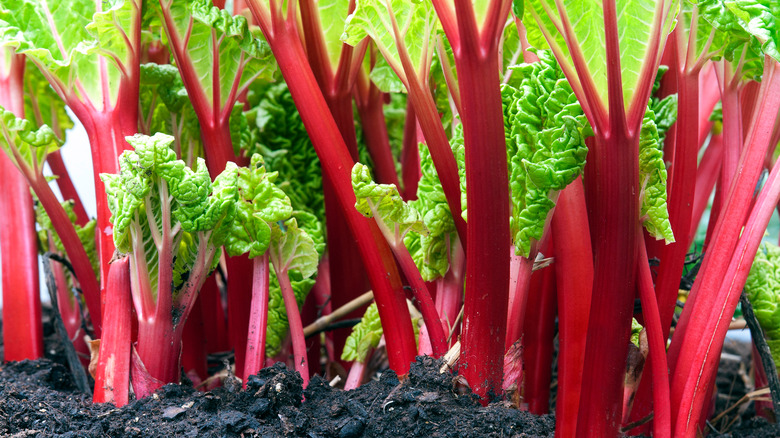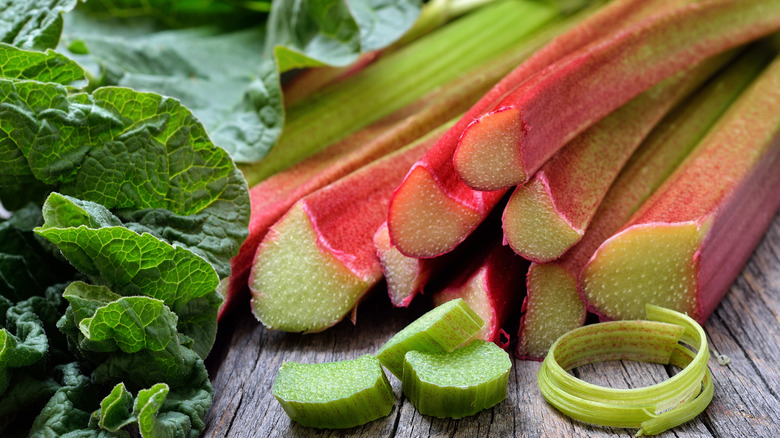Why You Should Never Eat Rhubarb Leaves
Rhubarb is one of those perplexing spring vegetables you've probably avoided cooking with, passing it hanging out next to the celery at your local grocery store. Maybe you've ordered a slice of it in oh-so-popular strawberry-rhubarb pie form at your favorite diner, or had a slice of cousin Barb's at the family reunion. This strange stalk looks like celery, it's stringy like celery, but tastes nothing like it. If you've never tasted rhubarb outside of pie just chopped up and raw, imagine sticking a handful of Sour Patch Kids into your mouth without any of the sugar. The bright pinkish-red, green leafy stalks are usually cut up and cooked down with a ton of sugar to combat their cringe-worthy tartness.
Also, if you're one of the folks that isn't sure if rhubarb is a fruit or vegetable, we're here to settle that for you. Sort of. Via HuffPost, businesses that imported this fregetable back in the day were taxed higher on rhubarb as a veggie than a fruit. This disparity in taxes led to what we like to call the Great Rhubarb Debate of 1947. In a New York Customs Court case, the supreme rulers upheld rhubarb's fruit status all in the name of saving businesses money, despite the fact that rhubarb is scientifically a vegetable (via Gardena).
Anyway, according to Insider, there's one thing you must do to rhubarb if you ever feel like making your own strawberry-rhubarb pie, or julienning it for a salad. Remove the leaves.
Rhubarb leaves are poisonous to humans
According to Modern Farmer, rhubarb leaves are "spectacularly poisonous." The leaves are very high in oxalic acid, an organic compound found in many plants. Once consumed, oxalic acid (or oxalate) can be synthesized by the body and has been linked to kidney stones and other health problems. Sometimes, folks prone to kidney stones may be asked to limit their intake of foods high in oxalate, like beans, nuts, beets, dark green veggies, and even chocolate. Oxalic acid can also bind to minerals in the gut and prevent your body from absorbing them, especially when combined with fiber (per Healthline).
So, back to our little rhubarb buddy. It takes about 25 grams of pure oxalic acid to cause death. Per Modern Farmer, rhubarb leaves aren't pure oxalic acid, though, so if you're a 150-pound person, you'd have to eat about 11 pounds of the leaves to get that much of the stuff into your body (or maybe just one of these giant rhubarb in Alaska). Eating less won't necessarily kill you, but please, don't try this at home. And pro-tip: Make sure when removing the poisonous leaves, you remember to shove them down the garbage disposal or throw them out in a way your pup or kitty can't get to them. Oxalate is toxic to animals, too.

